Figen S. Oktem
DDRM-PR: Fourier Phase Retrieval using Denoising Diffusion Restoration Models
Jan 06, 2025
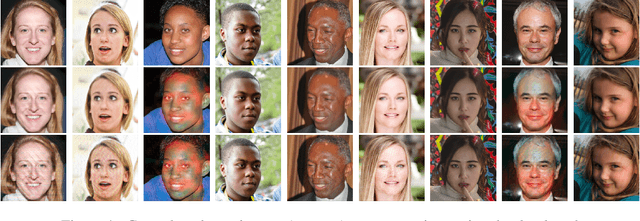


Abstract:Diffusion models have demonstrated their utility as learned priors for solving various inverse problems. However, most existing approaches are limited to linear inverse problems. This paper exploits the efficient and unsupervised posterior sampling framework of Denoising Diffusion Restoration Models (DDRM) for the solution of nonlinear phase retrieval problem, which requires reconstructing an image from its noisy intensity-only measurements such as Fourier intensity. The approach combines the model-based alternating-projection methods with the DDRM to utilize pretrained unconditional diffusion priors for phase retrieval. The performance is demonstrated through both simulations and experimental data. Results demonstrate the potential of this approach for improving the alternating-projection methods as well as its limitations.
Deep Plug-and-Play HIO Approach for Phase Retrieval
Nov 28, 2024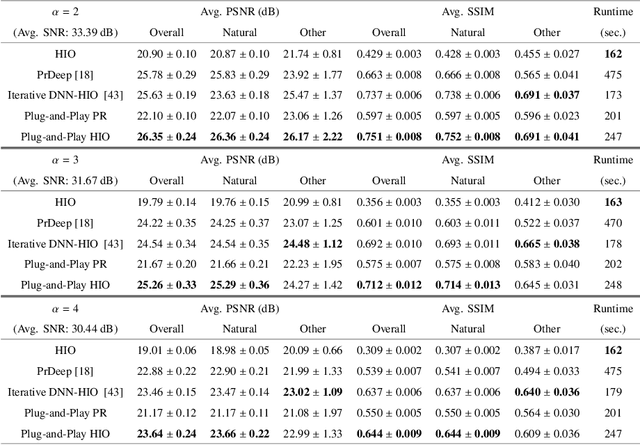
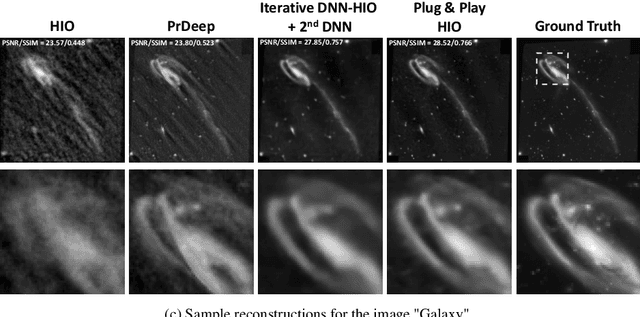
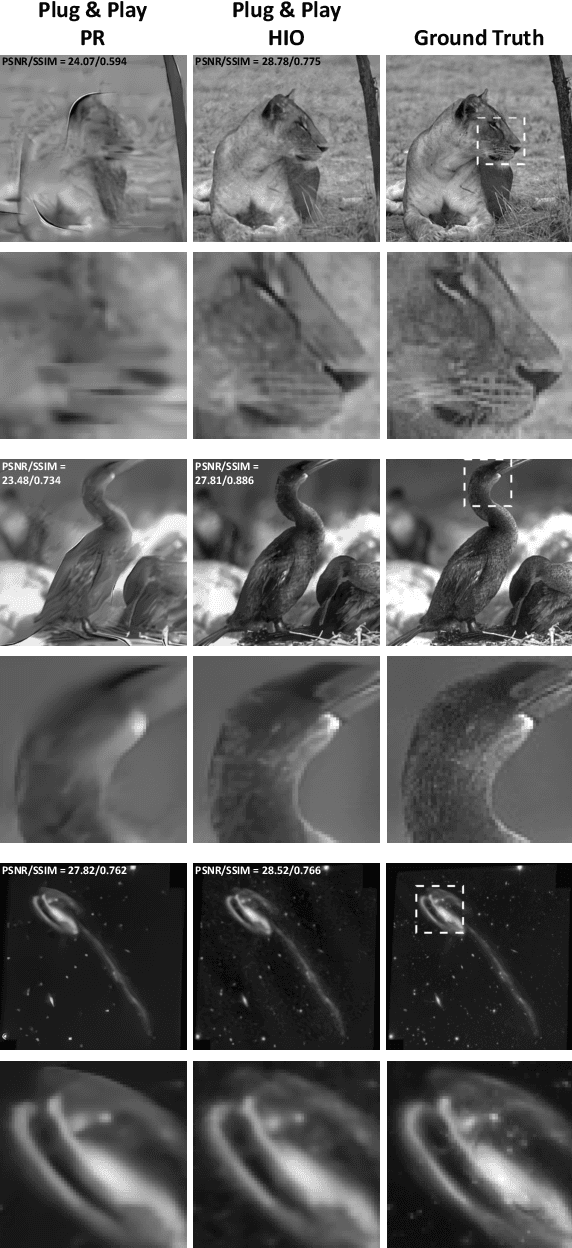
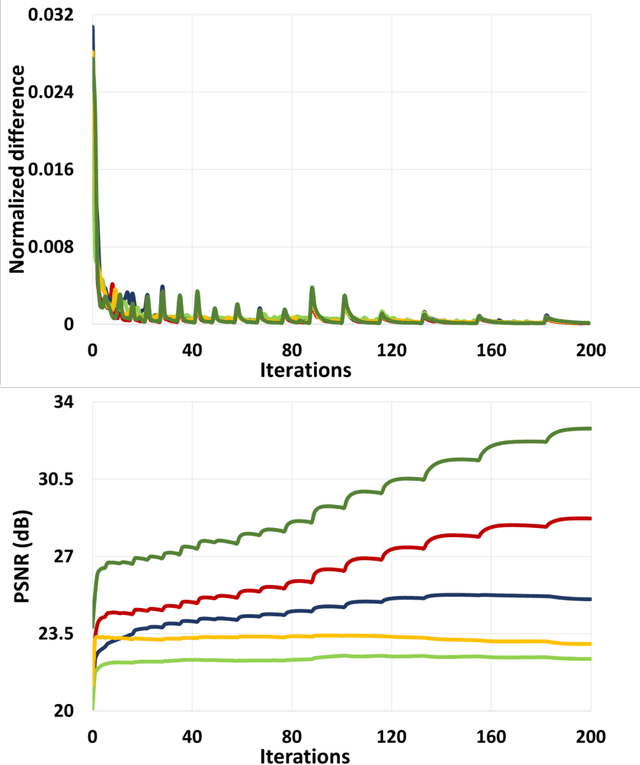
Abstract:In the phase retrieval problem, the aim is the recovery of an unknown image from intensity-only measurements such as Fourier intensity. Although there are several solution approaches, solving this problem is challenging due to its nonlinear and ill-posed nature. Recently, learning-based approaches have emerged as powerful alternatives to the analytical methods for several inverse problems. In the context of phase retrieval, a novel plug-and-play approach that exploits learning-based prior and e!cient update steps has been presented at the Computational Optical Sensing and Imaging topical meeting, with demonstrated state-of-the-art performance. The key idea was to incorporate learning-based prior to the hybrid input-output method (HIO) through plug-and-play regularization. In this paper, we present the mathematical development of the method including the derivation of its analytical update steps based on half-quadratic splitting and comparatively evaluate its performance through extensive simulations on a large test dataset. The results show the e"ectiveness of the method in terms of both image quality, computational e!ciency, and robustness to initialization and noise.
Efficient Physics-Based Learned Reconstruction Methods for Real-Time 3D Near-Field MIMO Radar Imaging
Dec 28, 2023



Abstract:Near-field multiple-input multiple-output (MIMO) radar imaging systems have recently gained significant attention. In this paper, we develop novel non-iterative deep learning-based reconstruction methods for real-time near-field MIMO imaging. The goal is to achieve high image quality with low computational cost at compressive settings. The developed approaches have two stages. In the first approach, physics-based initial stage performs adjoint operation to back-project the measurements to the image-space, and deep neural network (DNN)-based second stage converts the 3D backprojected measurements to a magnitude-only reflectivity image. Since scene reflectivities often have random phase, DNN processes directly the magnitude of the adjoint result. As DNN, 3D U-Net is used to jointly exploit range and cross-range correlations. To comparatively evaluate the significance of exploiting physics in a learning-based approach, two additional approaches that replace the physics-based first stage with fully connected layers are also developed as purely learning-based methods. The performance is also analyzed by changing the DNN architecture for the second stage to include complex-valued processing (instead of magnitude-only processing), 2D convolution kernels (instead of 3D), and ResNet architecture (instead of U-Net). Moreover, we develop a synthesizer to generate large-scale dataset for training with 3D extended targets. We illustrate the performance through experimental data and extensive simulations. The results show the effectiveness of the developed physics-based learned reconstruction approach in terms of both run-time and image quality at highly compressive settings. Our source codes and dataset are made available at GitHub.
* 27 pages, 17 figures. Accepted for publication in Digital Signal Processing, see DOI below. The source codes and the dataset are made available at https://github.com/METU-SPACE-Lab/Efficient-Learned-3D-Near-Field-MIMO-Imaging
Plug-and-Play Regularization on Magnitude with Deep Priors for 3D Near-Field MIMO Imaging
Dec 26, 2023



Abstract:Near-field radar imaging systems are recently used in a wide range of applications, such as medical diagnosis, through-wall imaging, concealed weapon detection, and nondestructive evaluation. In this paper, we consider the problem of reconstructing the three-dimensional (3D) complex-valued reflectivity distribution of the near-field scene from sparse multiple-input multiple-output (MIMO) array measurements. Using the alternating direction method of multipliers (ADMM) framework, we solve this inverse problem by enforcing regularization on the magnitude of the complex-valued reflectivity distribution. For this, we provide a general expression for the proximal mapping associated with such regularization functionals. This equivalently corresponds to the solution of a complex-valued denoising problem which involves regularization on the magnitude. By utilizing this expression, we develop a novel and efficient plug-and-play (PnP) reconstruction method that consists of simple update steps. Due to the success of data-adaptive deep priors in various imaging problems, we also train a 3D deep denoiser to exploit within the developed PnP framework for MIMO imaging. The effectiveness of the developed learning-based PnP approach is illustrated under various compressive and noisy observation scenarios using both simulated data and experimental measurements. The performance is also compared with sparsity priors and the commonly used analytical approaches such as back-projection and Kirchhoff migration. The results demonstrate that the developed technique not only provides state-of-the-art reconstruction performance for 3D real-world targets, but also enables fast computation. Our approach provides a unified general framework to effectively handle arbitrary regularization on the magnitude of a complex-valued unknown and is equally applicable to other radar image formation problems (including SAR).
Deep Iterative Reconstruction for Phase Retrieval
Apr 25, 2019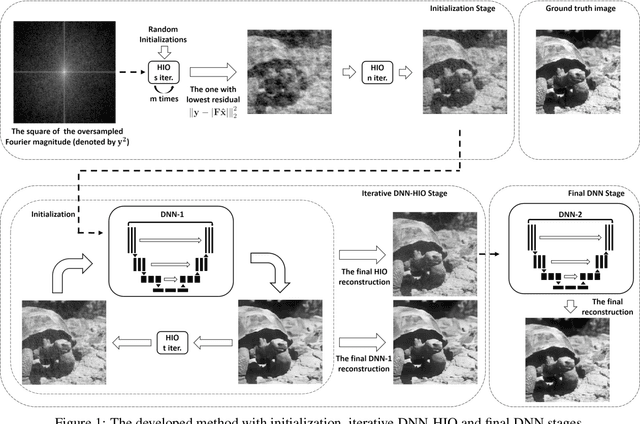
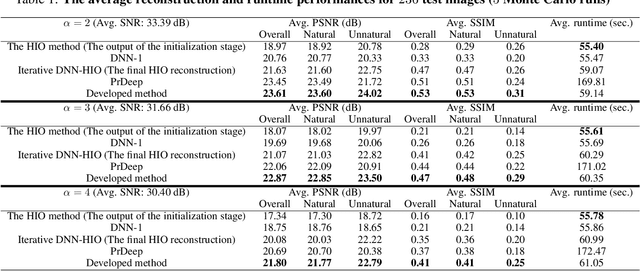
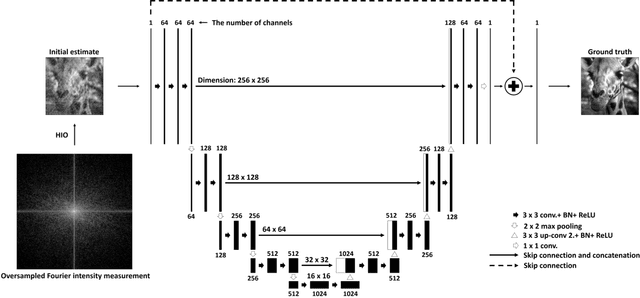
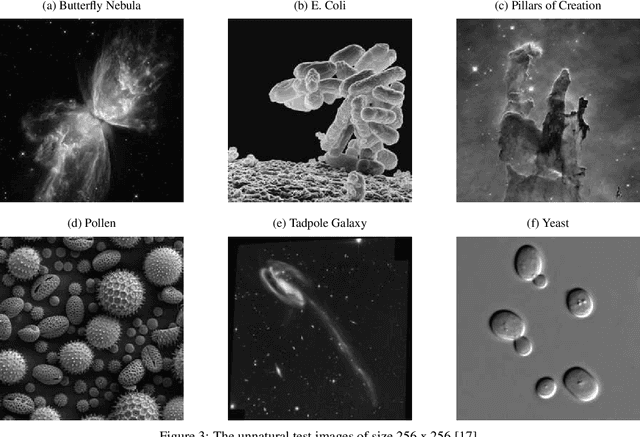
Abstract:Classical phase retrieval problem is the recovery of a constrained image from the magnitude of its Fourier transform. Although there are several well-known phase retrieval algorithms including the hybrid input-output (HIO) method, the reconstruction performance is generally sensitive to initialization and measurement noise. Recently, deep neural networks (DNNs) have been shown to provide state-of-the-art performance in solving several inverse problems such as denoising, deconvolution, and superresolution. In this work, we develop a phase retrieval algorithm that utilizes DNNs in an iterative manner with the model-based HIO method. The DNN architectures, which are trained to remove the HIO artifacts, are used iteratively with the HIO method to improve the reconstructions. Numerical results demonstrate the effectiveness of our approach, which has little additional computational cost compared to the HIO method. Our approach not only achieves state-of-the-art reconstruction performance but also is more robust to different initialization and noise levels.
 Add to Chrome
Add to Chrome Add to Firefox
Add to Firefox Add to Edge
Add to Edge